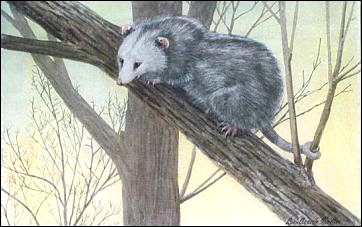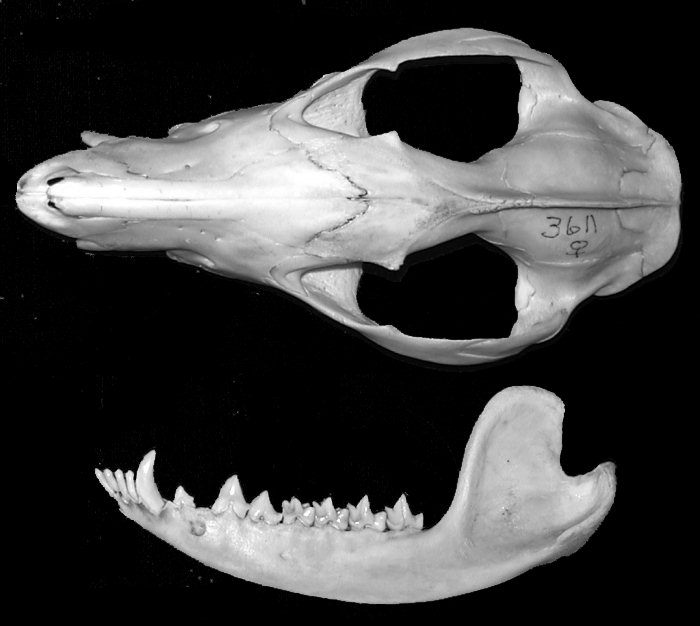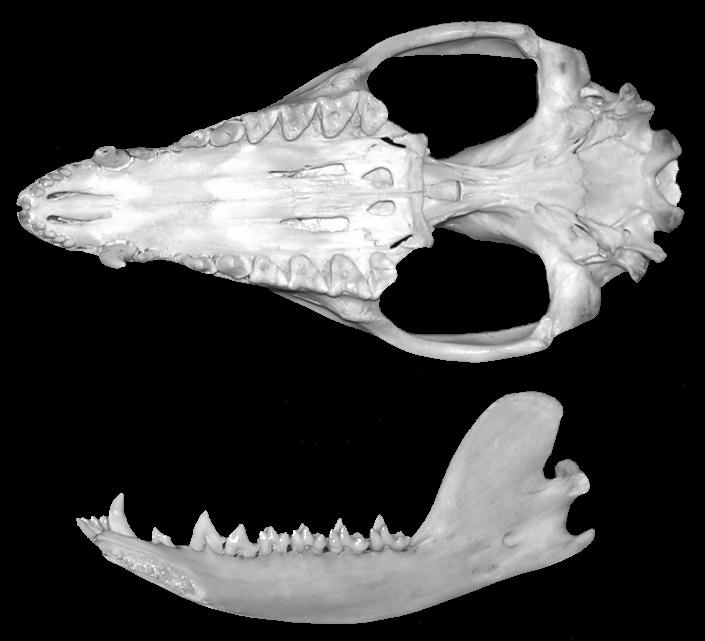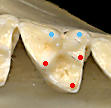 The Virginia Opossum has extended its range north within the U.S. historically, now reaching into southern Canada. Its native range is eastern, but it has been introduced into the West Coast, where it does well in urban situations, and also sporadically elsewhere. It is introduced in El Paso and apparently has reproduced locally.
The Virginia Opossum has extended its range north within the U.S. historically, now reaching into southern Canada. Its native range is eastern, but it has been introduced into the West Coast, where it does well in urban situations, and also sporadically elsewhere. It is introduced in El Paso and apparently has reproduced locally.
Fig. 1. Opossum. Painting by Louis Agassiz Fuertes. After Nelson, 1918.
In common with other didelphids, the big (first) toe is opposable and without a claw. A marsupium is present and well developed, and the mostly naked tail is prehensile. The tooth formula is the primitive one for marsupials (5/4 1/1 3/3 4/4). They are omnivorous. The "playing dead" habit is well entrenched, where the animal becomes paralyzed and seemingly dead, but recovers if left alone. The gestation period is only 12-13 days, and the 8 to 18 newborn young in a litter are smaller than honey bees. An average of about seven of the litter survive to leave the pouch. The young normally are attached to nipples within the pouch for over 2 months and, unattached and mobile, suckle for another month or so.

Fig. 2. Dorsal view of the skull and lateral view of the dentary of Didelphis virginianus.

 Fig. 3. Ventral view of the skull and medial view of the dentary of Didelphis
virginianus.
Fig. 3. Ventral view of the skull and medial view of the dentary of Didelphis
virginianus.
Figure 2 shows the palatal vacuities nicely as well as the down-turned posterior end of the hard palate. Note the tribosphenic lower molars (especially in Fig. 3) with the trigonid and talonid showing up beautifully. The three cusps of the trigonid are clear as are the entoconid and metaconid of the talonid; with care, the hypoconulid also can be seen. Figure 3 also shows clearly the inflected angular process typical of marsupials.
Fig. 4. Second right upper molar of an Opossum (anterior to right). The red dots mark the protocone, paracone, and metacone; the blue dots mark two stylar cusps.
Last Update: 19 Jan 2008
Centennial Museum and Department of Biological Sciences, The University of Texas at El Paso